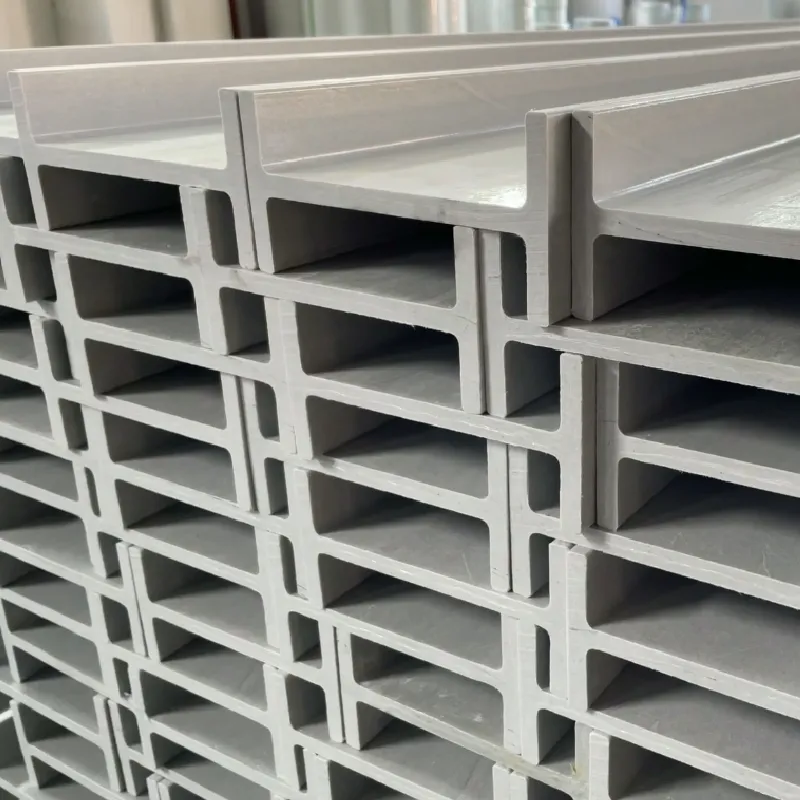loading...
- No. 9, Xingyuan South Street, Dongwaihuan Road, Zaoqiang County, Hengshui, Hebei, China
- admin@zjcomposites.com
- +86 15097380338
- Welcome to visit our website!
Exploring the Benefits and Features of FRP in Modern Applications
Understanding FRP (Fiber Reinforced Polymer) Composites A Versatile Material for Modern Engineering
Fiber Reinforced Polymer (FRP) composites are increasingly becoming a focal point of innovation in various engineering sectors due to their exceptional properties and versatility. FRPs are materials that consist of a polymer matrix reinforced with fibers, typically made from glass, carbon, or aramid. This combination of materials results in a composite that boasts high strength-to-weight ratios, corrosion resistance, and stiffness, making it an ideal choice for applications ranging from aerospace to civil engineering and beyond.
One of the primary advantages of FRP materials is their lightweight nature. Compared to traditional materials such as steel and concrete, FRPs offer significant weight savings without sacrificing durability or structural integrity. This characteristic is particularly advantageous in applications that require reduced weight for efficiency, such as in the aerospace industry, where every ounce counts. By utilizing FRP composites, manufacturers can enhance fuel efficiency and overall performance by reducing the weight of components like wings and fuselage sections.
.
FRP composites also exhibit high design flexibility, allowing engineers to create complex shapes and structures that would be difficult or impossible to achieve with traditional materials. The manufacturing processes for FRPs, such as pultrusion, hand layup, and resin transfer molding, enable intricate designs that can be tailored to specific performance requirements. This adaptability not only helps in meeting aesthetic considerations but also facilitates optimizing mechanical properties for various applications.
frp post

In recent years, the use of FRP materials has expanded significantly in the civil engineering sector, particularly in retrofitting and strengthening existing structures. As older infrastructures face the challenges of increased load demands and environmental degradation, FRP composites provide a practical and effective solution. By wrapping or bonding FRP materials to the affected areas, engineers can enhance the load-bearing capacities of beams, columns, and other structural components without significantly adding to their mass.
Furthermore, the environmental benefits of FRP composites cannot be overlooked. Many FRPs are produced using sustainable practices, and some can be designed for recyclability at the end of their life cycle. This aligns with the increasing global emphasis on sustainable development and the need for materials that minimize environmental impact while still providing high performance.
Despite their many advantages, there are challenges associated with the use of FRP composites. The initial costs can be higher compared to traditional materials, which may deter some companies from making the switch. Additionally, there are concerns regarding the long-term behavior of FRPs under extreme conditions, including temperature fluctuations and fire resistance. However, ongoing research and advancements in material science are addressing these issues, leading to enhanced formulations and improved performance specifications.
In conclusion, Fiber Reinforced Polymer composites are revolutionizing various industries with their lightweight, corrosion-resistant, and versatile properties. As technology advances and production techniques improve, FRPs are poised to become even more integral to modern engineering solutions. The ongoing exploration of their potential applications suggests that they will continue to play a crucial role in shaping the future of construction, aerospace, automotive, and many other sectors. Embracing FRP technology not only meets current demands for efficiency and performance but also aligns with the growing commitment to sustainability in engineering practices.
-
The Rise of FRP Profiles: Strong, Lightweight, and Built to LastNewsJul.14,2025
-
SMC Panel Tanks: A Modern Water Storage Solution for All EnvironmentsNewsJul.14,2025
-
GRP Grating: A Modern Solution for Safe and Durable Access SystemsNewsJul.14,2025
-
Galvanized Steel Water Tanks: Durable, Reliable, and Ready for UseNewsJul.14,2025
-
FRP Mini Mesh Grating: The Safer, Smarter Flooring SolutionNewsJul.14,2025
-
Exploring FRP Vessels: Durable Solutions for Modern Fluid HandlingNewsJul.14,2025
-
GRP Structures: The Future of Lightweight, High-Performance EngineeringNewsJun.20,2025
